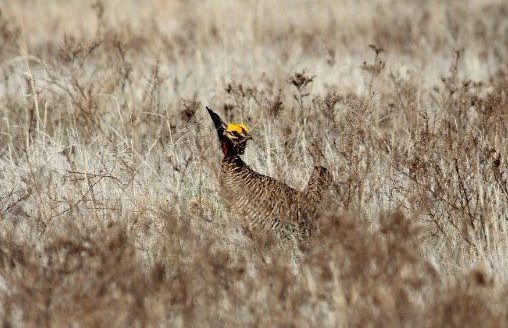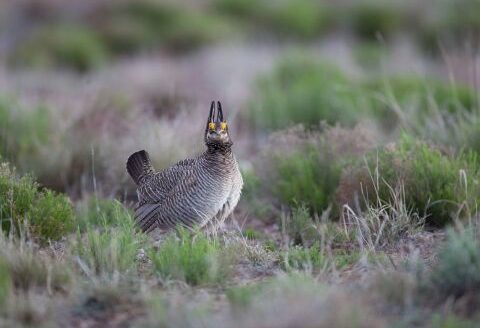The U.S. Fish and Wildlife Service has approved the first of two proposed Habitat Conservation Plans from LPC Conservation, LLC, of Oklahoma City, Oklahoma.
These plans, announced Dec. 1, enable energy producers to explore and develop natural resources while helping the lesser prairie-chicken, whether or not the bird is listed under the Endangered Species Act next year.
The HCP will guarantee Endangered Species Act approvals for energy producers in exchange for their contributions to habitat for the lesser prairie-chicken. The development fees pay private landowners a market-based rate to protect and restore key habitat on their properties.
LPC Conservation is dedicated to the protection and conservation of the lesser prairie- chicken as part of a robust energy economy.
This first HCP will provide range-wide incidental take permit for wind, solar and communication projects. These facilities, towers, and high-tension wires degrade habitat quality. Industry participants fund approved conservation banks under the plan now approved by the USFWS.
Wayne Walker, CEO LPC Conservation, stated “Our team is committed to stronghold habitats for the LPC paired with strong energy and communications developments. Our private market-based business moves the economy and the ecosystem beyond what government programs can do. It’s wonderful to provide an option for responsible development that will also finally contribute to the conservation of the LPC in a meaningful way and we hope prospective clients will reach out early, before the listing is finalized in June.”
Walker added that he has appreciated working closely with the U.S. Fish and Wildlife Service, which worked quickly and skillfully to complete the HCP.
“This program provides industry with legal coverage by permanently protecting and restoring the last of the best parcels of land in the American prairie for this iconic species,” Walker added.
“None of this would be possible without America’s best conservation stewards: the private ranchers and farmers who are the last hope for the lesser prairie-chicken,” Walker said. “They make it possible for my company to work with developers, conservation groups, and federal and state agencies to ensure effective delivery of conservation benefits.”
LPC Conservation has the availability of approximately 50,000 acres of advance mitigation credits, with ability to expand in strategically located areas that meet the USFWS stronghold criteria, and are already approved by USFWS. Market-based conservation easements with a long-term management plan and endowment are placed with existing contracts with private landowner partners across multiple LPC ecosystems in Kansas, New Mexico and Texas. Any mitigation purchased within these areas will immediately contribute to the USFWS stronghold and restoration goal also identified in the range-wide plan for the lesser prairie-chicken.
For more information or to purchase credits, energy developers and future clients are asked to contact LPC Conservation or go to http://commongroundcapital.com/
Along with the final HCP, the U.S. Fish and Wildlife Service is publishing a final environmental assessment which evaluates the effects of issuing the incidental take permits and addresses comments received during the public comment period, according to the fish and wildlife service. Full implementation of the HCP is expected to potentially affect 500,000 acres of suitable lesser prairie-chicken habitat. Under the plan, industry participants will work with LPC Conservation, LLC, the permit administrator, to ensure projects minimize impacts to the lesser prairie-chicken, and mitigation is in place to offset their project’s impacts to the species and its habitat on a voluntary basis. The HCP and ITP will be in effect for 30 years.
The final HCP and EA can be found at www.fws.gov/southwest/es/LPC.html.
The lesser prairie-chicken is a species of prairie grouse that occupies a five-state range including portions of Texas, New Mexico, Oklahoma, Kansas and Colorado. Lesser prairie-chicken populations require large tracts of relatively intact native grasslands and prairies to thrive.
On June 1, the service released its proposal to list two distinct population segments of the lesser prairie-chicken under the ESA. The service will make a final determination on the proposed listing by June 1, 2022.



